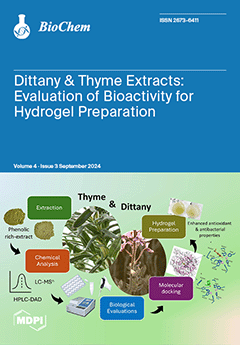Colorectal cancer (CRC) is a prevalent and deadly tumor worldwide. Understanding the molecular mechanisms underlying CRC development will improve treatment outcomes and patient survival. Natural molecules and metabolites from plants, such as
Tillandsia usneoides, reduce tumor growth by modulating glucose metabolism and
[...] Read more.
Colorectal cancer (CRC) is a prevalent and deadly tumor worldwide. Understanding the molecular mechanisms underlying CRC development will improve treatment outcomes and patient survival. Natural molecules and metabolites from plants, such as
Tillandsia usneoides, reduce tumor growth by modulating glucose metabolism and increasing reactive oxygen species (ROS). To shed light on the mechanism involved in the anti-tumor effects of
T. usneoides, we evaluated the cytotoxic effect of the ethanolic extract of this plant on the colon cancer cell line SW480 through the activation of the peroxisome proliferator-activated receptor gamma (PPARγ), a nuclear receptor that plays a role on lipid metabolism and inflammation in cancer cells. To this end, we assessed the activation of PPARγ by
T. usneoides extract in transactivation luciferase assays, as well as the cytotoxic effect of this extract on the SW480 cell line after knocking down PPARγ using shRNA. Our findings indicate that the
T. usneoides extract exhibits cytotoxic effects on the SW480 cell line, potentially in the same way as PPARγ activator, pioglitazone, i.e., by increasing reactive oxygen species (ROS). In addition, both
T. usneoides extract and pioglitazone exert lipogenic properties in the SW480 cells. Taken together, these results demonstrate that the
T. usneoides extract decreases the viability of the colon cancer cell line SW480, at least in part, through the activation of PPARγ. This suggests the potential for further use of this plant in the treatment of other chronic diseases.
Full article



